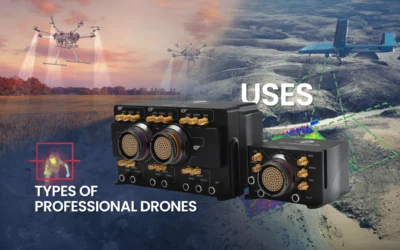Professional UAVs are usually complex systems that require reliable communication with their control units. In the case of multirotors, the large amount of motors to be controlled must be addressed somehow.
Usually, pulse width (PWM) and serial (RS232, RS485) channels are used in UAVs to control, command, and retrieve telemetry data from these subsystems.
Common Problems
PWMs are not well suited for long distances, turning even worse in noisy conditions. In addition, some systems require serial communications to send commands and receive telemetry, which complicates wiring as we add more controllers to the platform.
Sometimes it is not even possible to directly connect to all the subsystems because the number of available ports is limited.
Embention’s solution
Embention’s engineers have come to a simple yet efficient and reliable solution for all those issues: the Embention Avionics CEX board.
This board provides dual redundant CAN channels for the Autopilot/System side interface. In the other side, it provides PWMs, UARTs, and Digital I/O to connect to ESCs, servos, control units, etc.
Benefits of the Avionics CEX
The Avionics CEX provides, with just two CAN wires (or four if redundant CAN is wanted), a way to interconnect a large number of systems at long distances with the proven reliability of the CAN bus. We convert a star connection scheme to a bus connection scheme. This reduces the total wire length and obviously the wiring weight, which is often a critical issue in any flying platform.
Finally, it also supports dual redundant CAN. If one of the busses gets broken, the other will continue working normally, adding the extra safety required in modern systems.
The number of systems that can be attached depends on the data load. A system with 16 boards controlling motors at 50Hz and sending telemetry from them at 1Hz has been implemented successfully in a real case.















